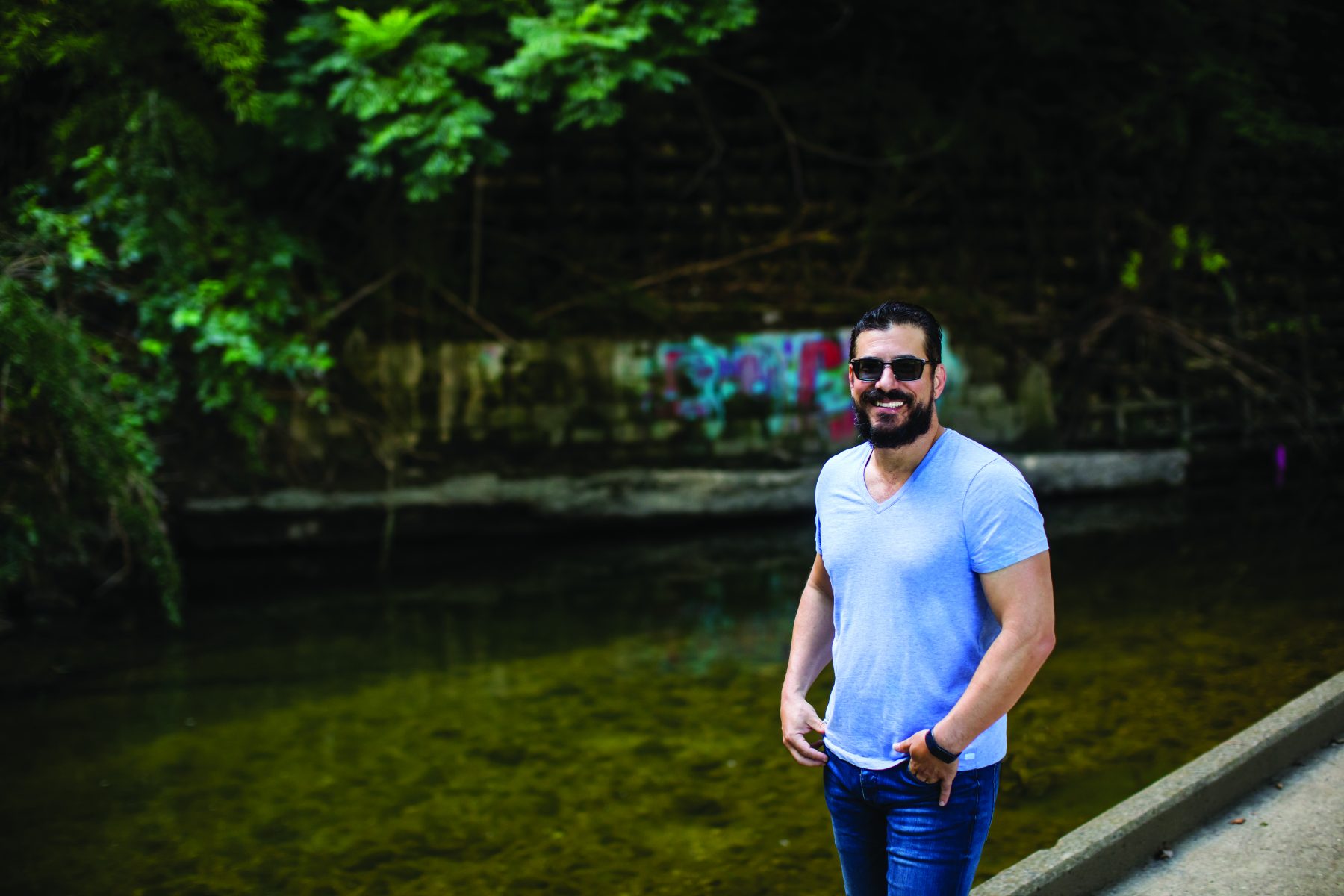Mind and Movement

It is no secret our minds and bodies are part of one being, but when talking about health, we tend to separate our mental and physical selves. However, growing research suggests there is actually significant overlap between our mental and physical health.
“Our physical health can absolutely influence our mental health,” says Vaile Wright, a clinical psychologist and senior director of health care innovation for the American Psychological Association. “If we are feeling sick physically, we might often be more depressed or anxious. Stress, anxiety and depression can also lead to things like cardiovascular disease, high blood pressure and obesity.”
As there is a better understanding of the way these two systems influence each other, Wright says in treating mental health, therapists are taking a more holistic approach by adding movement into a therapy session to include the whole person. One way Aaron Rochlen does this is through walk and talk therapy.
Rochlen is a licensed psychologist and professor at the University of Texas at Austin who works primarily with men and combines talking and walking in his practice to holistically connect nature, mind and body.
“Walk and talk therapy can be looked at like a metaphor in that me and my clients are on the same path, moving together on neutral ground,” says Rochlen. “I find that, for most of us, we feel better when we exercise. While therapy is not always going to make you feel better, I believe in the combination of the positive benefits that come with exercise while working on difficult areas in one’s life.”
Rochlen began his practice in walk and talk therapy after experiencing how being outdoors and exercising can lead to a more clear sense of growth. As a psychologist, Rochlen says he wanted to bring this experience from his personal life, and Austin is a great place to do that.
“Austin is a very health-centric, fitness-focused community, home to a population of folks who can recognize mental illness as a significant part of health,” says Rochlen. “And I think combining physical fitness and nature-loving unity with therapy is a natural combination.”
Rochlen’s main focus both as a clinician and a researcher is working with men. Generally, he works with clients who have experienced problems in relationships, transitions, loss, critical life decisions, intimacy, anxiety or depression.
Rochlen was trained in traditional counseling and psychotherapy, which he says for the most part was connected to seeing clients in confidential spaces, typically small offices. When Rochlen started his private practice, however, he found both he and his clients gained more benefits while moving and being in nature-based settings.
“The intimate aspects of sitting with a client in a small room — even things like the typical, required eye contact of good therapeutic work — is not a peaceful or calming concept for a lot of guys,” Rochlen says. “In my experience, men really like the exercise component. It’s a two-in-one — they are getting good exercise while working on themselves.”
Meeting at neutral locations and less common walking paths around Central Austin, Rochlen and his clients walk and talk for approximately one-hour sessions. Whether it’s beautiful outside or less comfortable and inconvenient, Rochlen says unless there are extreme weather circumstances, he still hosts walk and talk therapy sessions.
“We walk in all types of weather, because I see weather and walking as another useful metaphor for therapy and working on our lives,” Rochlen says. “Sometimes it’s easy, comfortable and beautiful, but sometimes it’s not. Sometimes it’s too hot or too cold, or it’s rainy and miserable. Only under unsafe conditions do I host clients in my office.”
However, the biggest challenge one might face in walk and talk therapy is not the weather. The biggest concern with walk and talk therapy is confidentiality.
“To address the challenge of confidentiality, we make sure to talk about what would happen if we bump into someone we know and how we want to handle the situation,” Rochlen says. “What is most important is to be on the same page and obviously talk about it after if something comes up.”
While Wright and Rochlen both agree the challenge of confidentiality is not unsolvable, Wright says it is important to have discussions about the options, risks and benefits of different approaches to therapy when trying to find the one that works best.
“I think walk and talk therapy can be effective with anybody, because it models exercise behavior, and being outside also has a therapeutic component to it,” says Wright. “Really, the way to know what modality of therapy works for you is to collect outcomes.”
Wright suggests having conversations about what is working best and having clients fill out a scale or survey at the end of sessions. This allows therapists to track the data to make sure people are improving and evaluate from there whether they need to have a conversation about finding something that better fits the client.
Rochlen says as the stigma of being in therapy goes down, and the recognition of overlap of physical and mental health increases, there will be a bigger demand and efficacy for walk and talk therapy.
While Wright acknowledges there are certainly still people rooted in the traditional sense of psychotherapy, she also says as we gain more understanding, the definition of therapy and the different techniques that can be used is expanding.
“We all want people to get better — that’s the ultimate goal,” she says. “And now there is openness to think more creatively outside the box to help heal people with what works best for both the client and the therapist.”






